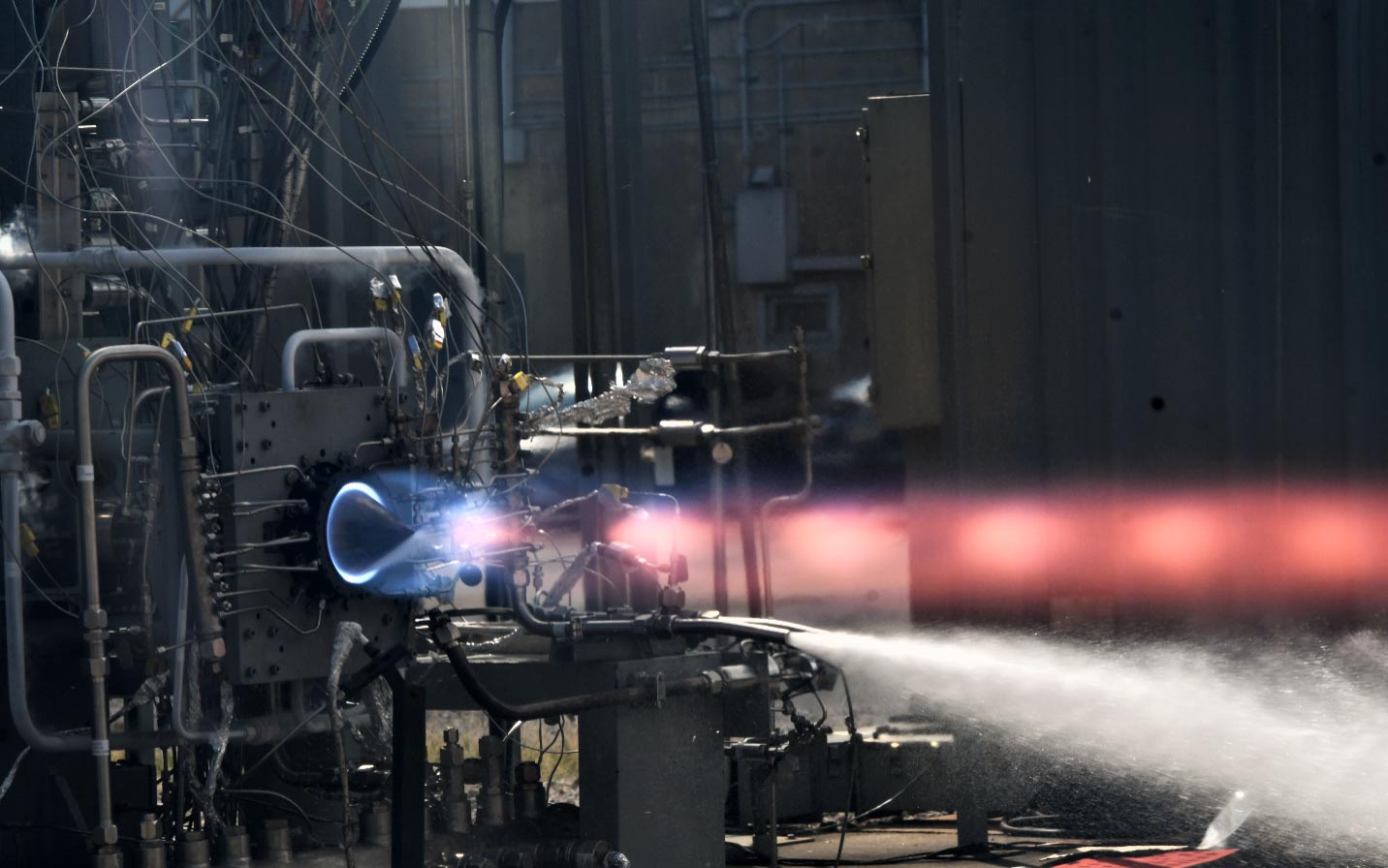Moteur de fusée à détonation rotative ou test de tir à chaud RDRE au Marshall Space Flight Center. Crédit : NASA
aimer[{ » attribute= » »>NASA takes its first steps toward establishing a long-term presence on the Moon’s surface, a team of propulsion development engineers at NASA have developed and tested NASA’s first full-scale rotating detonation rocket engine, or RDRE, an advanced rocket engine design that could significantly change how future propulsion systems are built.
The RDRE differs from a traditional rocket engine by generating thrust using a supersonic combustion phenomenon known as a detonation. This design produces more power while using less fuel than today’s propulsion systems and has the potential to power both human landers and interplanetary vehicles to deep space destinations, such as the Moon and Mars.
ingénieurs en Centre de vol spatial Marshall de la NASA à Huntsville, Alabama, et le principal collaborateur IN Space LLC, situé à West Lafayette, Indiana, confirment les données des tests de feu chaud RDRE menés en 2022 dans la zone de test Eastern Marshall. Le moteur a été tiré plus d’une douzaine de fois, totalisant près de 10 minutes de durée.
RDRE a atteint son objectif de test principal en démontrant que ses appareils – fabriqués avec de nouveaux processus de fabrication additive ou d’impression 3D – peuvent fonctionner pendant de longues périodes tout en résistant aux environnements de chaleur et de pression extrêmes générés par le dynamitage. Fonctionnant à plein régime, le RDRE a produit plus de 4 000 livres de poussée pendant environ une minute à une pression de chambre moyenne de 622 psi, la pression nominale la plus élevée jamais enregistrée pour cette conception.

Moteur de fusée à détonation rotative ou test de tir à chaud RDRE au Marshall Space Flight Center. Crédit : NASA
RDRE comprend du cuivre développé par la NASA[{ » attribute= » »>alloy GRCop-42 with the powder bed fusion additive manufacturing process, allowing the engine to operate under extreme conditions for longer durations without overheating.
Additional milestones achieved during the test include the successful performance of both deep throttling and internal ignition. This successful demonstration brings the technology closer to being used with future flight vehicles, enabling NASA and commercial space to move more payload and mass to deep space destinations, an essential component to making space exploration more sustainable. Because of NASA’s recent success with the RDRE, follow-on work is being conducted by NASA engineers to develop a fully reusable 10,000-pound class RDRE to identify performance benefits over traditional liquid rocket engines.

Thrust propulsion testing and characterization of the University of Central Florida rotating detonation rocket engine is shown in this photo. NASA provided funding for a UCF project focused on rotating detonation rocket engines, which use high-energy explosions to produce more energy with less fuel, improving engine efficiency and cutting down space travel costs and emissions. Credit: UCF
RDRE is managed and funded by the Game Changing Development Program in NASA’s Space Technology Mission Directorate.

« Évangéliste généraliste de la bière. Pionnier du café depuis toujours. Défenseur certifié de Twitter. Internetaholic. Praticien du voyage. »



/cdn.vox-cdn.com/uploads/chorus_asset/file/24043392/chromecast.jpg)



More Stories
Les cas de dengue atteignent 5,2 millions dans les Amériques alors que l'épidémie dépasse le record annuel, selon l'Organisation panaméricaine de la santé
Les scientifiques de l'UF espèrent arrêter la maladie bronzante mortelle des palmiers de Floride
L’Organisation mondiale de la santé affirme que le risque de transmission de la grippe aviaire aux humains constitue une « préoccupation majeure ». La grippe aviaire